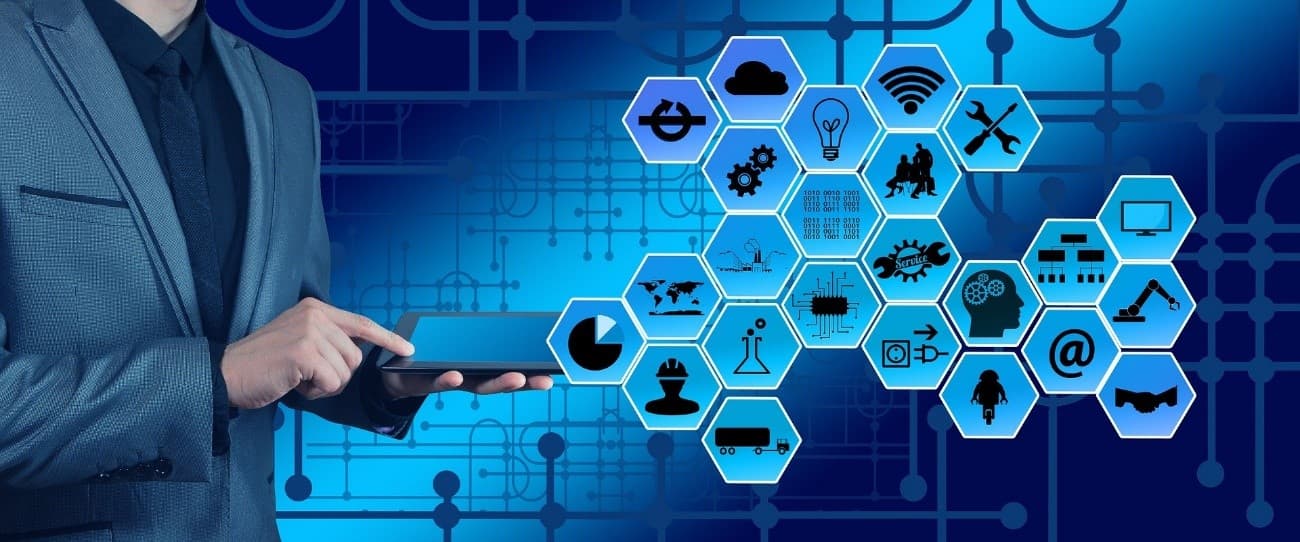Companies are in the midst of a digital transformation. Industry 4.0 has accelerated due to the COVID-19 pandemic and the needs have shifted to Industry 5.0. The model that used to be about optimizing the means of production has been superseded and is now focused on achieving collaboration between humans and intelligent systems.
The industrial sector, responsible for more than 16% of the world’s GDP, has shown that those companies that are committed to innovation and new technologies face and overcome challenges in a more favorable way.
From Infinitia, we also join the R & D and, therefore, in this article we will develop some of the main trends that will prevail in the industrial sector in the coming year; essential transformations to collaborate with our customers in improving their competitiveness, trends, and achieve our goal of positioning ourselves as a benchmark.
1. IoT (Internet of Things)
The “Internet of Things”, an abstract and intangible concept, is responsible for many of our daily habits and facilities. Thanks to its incorporation in everyday devices, we can program a robot vacuum cleaner to go around the house whenever we want or the virtual assistants Siri or Alexa to offer us their immediate availability when they hear a word in our voice.
The home serves, at first, to understand the simplified virtues of the IoT. However, this network – improved since its inception in the 1990s – also seeks to benefit industries and businesses. With sensors integrated into physical objects, this tool provides agility, efficiency and automation in its application. To mention some of its opportunities, IoT allows monitoring machines and product quality, improves the tracking of physical assets and, among other things, facilitates changes in business processes.
Currently, there are more than 7,000 IoT devices, with the number expected to grow to 22 billion by 2025.
2. The efficient automation of 5G
If the acronym “4G” referred to the fourth generation of mobile telephony and wireless communication technology, “5G” brings – with its consequent controversy – its fifth generation which, in theory, makes it possible to increase the speed of information transfer, so that the time between the orders and executions of the machinery is reduced. It also makes the devices intelligent, allowing them to operate without human assistance and to collect and respond to their own data to predict breakdowns and other such situations.
On a more technical level, “Network Slicing” is applied, i.e., the network is divided into sub-networks, allowing for greater energy and cost efficiency. A study published in 2017 revealed that this “network slicing” would generate 35% more revenue over five years than a single multi-service network.
5G is presented, for an increasingly near future, as a driver of hyperconnectivity and digital transformation. In fact, it is estimated that, by 2025, there will be 80 billion devices connected to this network.
3. 3D Printing: Advances and evolution
The challenge in manufacturing is always focused on achieving optimized prototypes: cheap, light, compact, sustainable… 3D printing, perfected since its appearance on the market in 1992, consists of manipulating metal, ceramic or plastic powders with a laser that solidifies the materials to create the object layer by layer.
This innovation, on which more and more companies in the industrial sector are relying, provides a cost-effective and fast way for product designers, both in the initial product testing phase and to produce items “on demand”.
Although their sales have been reduced in the last year due to the pandemic, there is no doubt about their future after learning about their benefits.
4. The Connected or Smart Factory
Fusion between the virtual and the physical, the concept of “The Smart Factory” uses technology, in a complementary way in its processes, to improve its working methods and create its own value. Each company, depending on its interests, is the one that will decide which technologies to apply, as there is no one better than the other.
“The Smart Factory” works like a smart home, but on a larger scale. In this way, it could be said that the intelligence of the factory lies in combining technological trends (some previously presented) with manual labor to reach its maximum potential.
With machinery it is clear, but what is the role, then, of the employees? This new paradigm, we insist, does not replace humans with machines, but enhances their tasks. Workers continue to be responsible for management and decision making, but “The Smart Factory” allows them to be in touch with their projects even if they are located in remote areas.
In short, thanks to the opportunities of technology and our ability to take advantage of the opportunities presented to us, we will be able to become more flexible, efficient and, without a doubt, autonomous.





